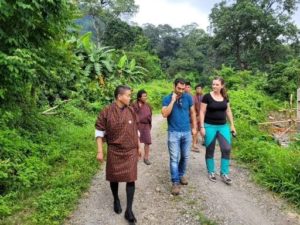Our solar drying project, which is financed with Sida’s development research funds, aims to use solar energy to dry crops in an environmentally friendly way. This means, among other things, that the technology must be: easy to use, fit in socially and economically and that the dried products maintain a high quality and are in demand on the market.
A first generation solar dryer has been developed by students at Lund University and has also been built locally in Bhutan. Now we have come to stage 2, where we will test and evaluate the technology on site in Bhutan in collaboration with Jigme Namgyel Engineering College, Royal University of Bhutan.
Our trip in September/October 2022 focused on understanding the local context and seeing how the farmers are doing, which crops they grow and which crops they are already drying today. We need to understand what previous experience there is with food drying. We conducted both individual and group interviews with selected farmers around Dewatang.
In Bhutan, both chili and maize are already dried by open sun drying, chili often on roofs and maize under simple weather protection. The chili is not brought in when it rains, which can lead to mold growth, which can be avoided with our solar drying technology. It is clear that there is already a market for dried crops in Bhutan today, which facilitates our solar dryer development.
The next step in the project is to test a first prototype with relevant crops, such as chilli, mushroom, ginger and apple. A student from Lund University has joined and has recently spent 13 weeks at JNEC in Samdrup Jonkar, Dewatang.
Associate professor Martin Andersson, Lund University of Technology
 From left Tshewang Lhendup (JNEC), Ricardo Bernardo (Lund) and Pia Otte (Ruralis, Norway)
From left Tshewang Lhendup (JNEC), Ricardo Bernardo (Lund) and Pia Otte (Ruralis, Norway)
